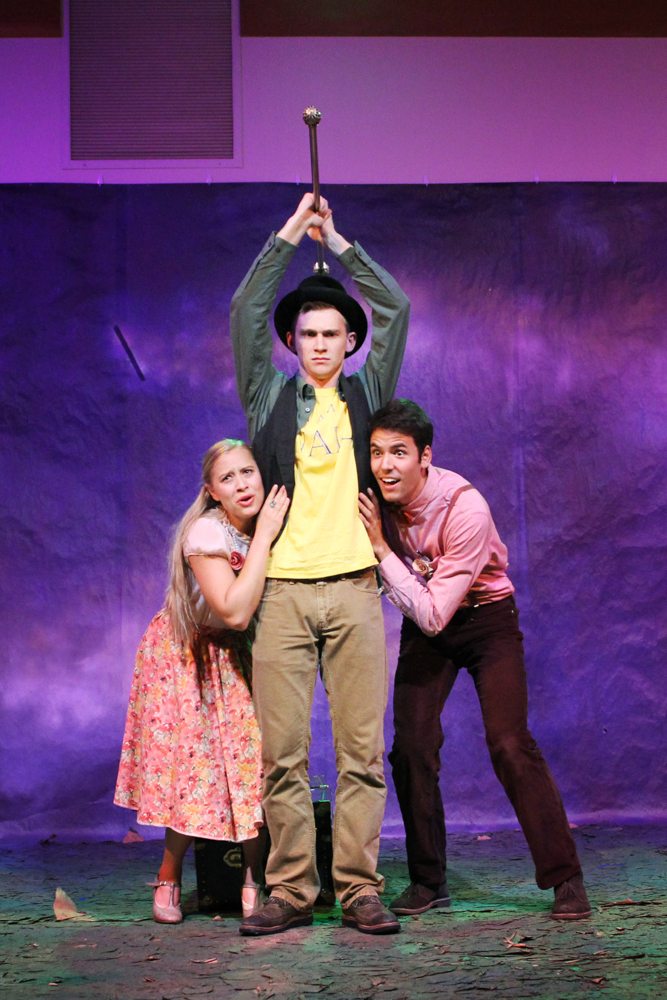When nighttime jubilees pass and come undone, how do happy endings appear in the sun?

Directed by Ken Savage ’14, the 1960 Tom Jones musical, “The Fantasticks,” settles this question with the story of two wide-eyed lovers separated by an anthropomorphic wall built by faux-feuding fathers.
With simple mossy flooring and a romantic sky backdrop, the minimalism of the intimate stage set the scene for the actors’ exuberance. The musical opens in a frenzy with the cast of eight scurrying about the stage. Amid captive viewers, the brooding narrator and bandit El Gallo (Joel Chapman ’14) encourages the full audience to “Try to Remember” the lackadaisical days of September.
Fittingly enough, early days of September for most Stanford students indeed consist of happy-go-lucky musings free from problem sets and midterms, and the musical’s opening number enchanted as the lively story of Luisa and Matt (Annie Sherman ’14 and Ben Laboy ’13 M.S. ’14) unraveled.
Harmonized with her delicate soprano voice, Sherman’s actions perfectly embodied the innocence of a sixteen-year-old girl as she marveled at how her life is filled with “Much More” excitement than is typical for a girl her age. Laboy complements Sherman’s juvenile character with lofty prose and expressive dinner-plate-sized eyes that charm even the separating wall known as The Mute (Matt Herrero ’17). Throughout the duration of the two-hour musical, Herrero’s silent charm effortlessly drew the audience into the dramatic world of the two adoring fantasticks.
One of the show’s highlights was the covert relationship between neighboring gardeners and quaint fathers Hucklebee and Bellomy (Weston Gaylord ’15 and Mark O’Meara ’13). In addition to their praise of radishes, the schemers’ elaborate four-minute handshake, consisting of coordinated leg-grabbing and galactic transmissions, incited amused laughter and deserved applause.
Comical performances by Henry and sidekick Mortimer (Davy Lu ’16 and Jin Park ’16) made creative use of seppuku and self-immolation in a display of impressionist ability and cultural awareness. The pair added cheer to the growing parental anxieties of Hucklebee and Bellomy and to the increasingly melodramatic relationship between Luisa and Matt.
Act II sheds light on the pains of love en route to the actual happy ending. During the musical’s longest song, “Round and Round,” the production team overcame the cozy stage size by using artistic lighting and human shadow puppets to depict Luisa and El Gallo’s fantasies as Matt became a prodigal son. Witty music and inviting performances from all characters allowed “The Fantasticks” to show that transient endings are merely part of a larger story.
Contact Sophia Dao at sdao “at” stanford.edu.